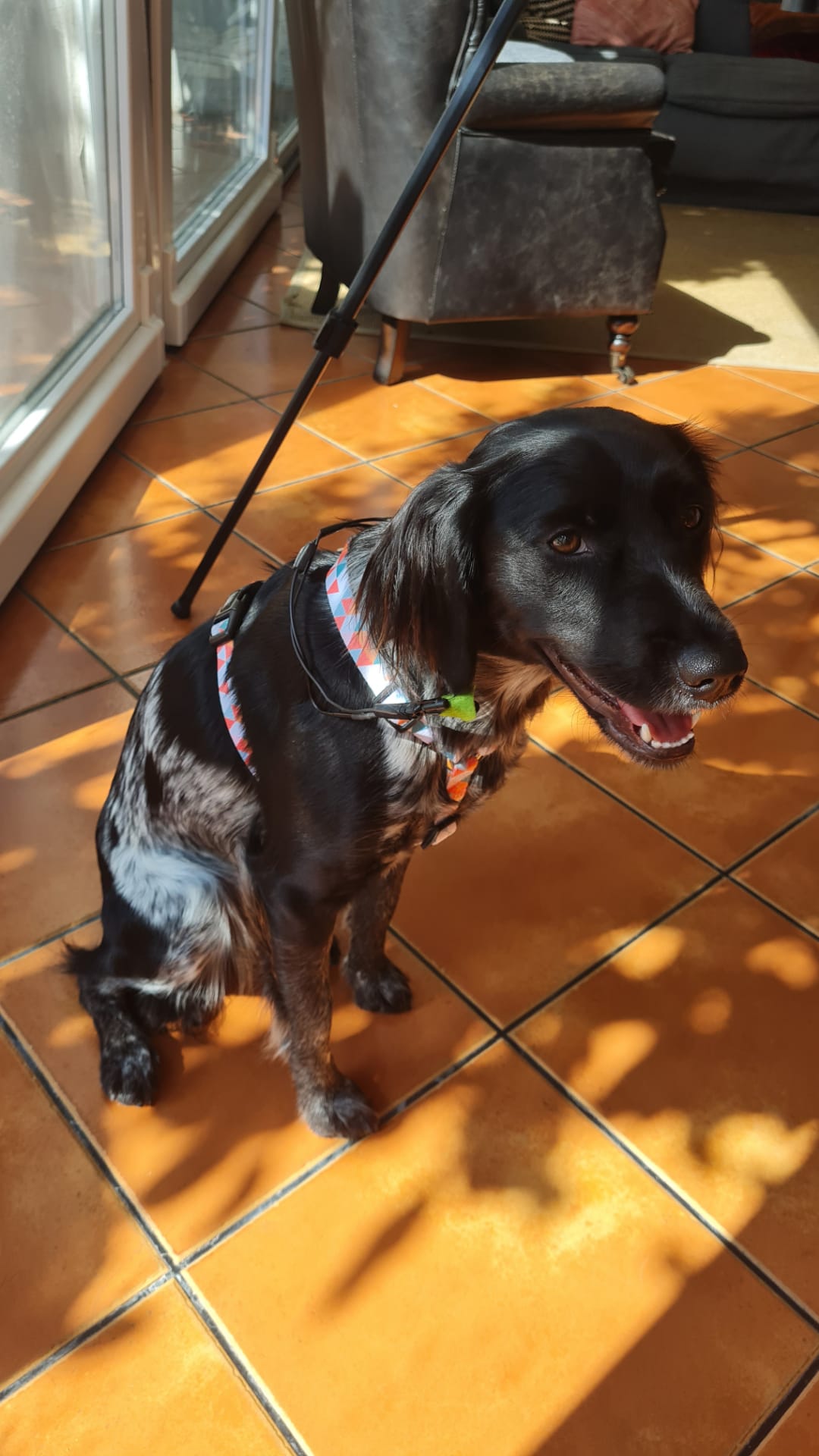“He was a silent fury who no torment could tame.”
Jack London, White Fang
Dog-owner dyads
As the original aim of the study was more focused on the vocalizations of dogs and owners, the subjects of the study were selected based on the prerequisite for that. Because of this, a few limiting factors were taken into consideration when selecting the subjects:
- Dog owners had to be Portuguese-speaking females and older than 16 years old, in order to have less variables when analyzing their voices;
- Dogs needed to weight more than 8kg, so they could have a harness and microphone attached to them without compromising their behavior;
- Dogs and owners had to live near Lisbon, so they could be visited and recorded in their own homes.
With these limiting factors in mind, a recruitment questionnaire was created and shared online, via social media, as well as sent to a veterinary clinic and a dog training center in the Lisbon metropolitan area. Each owner with more than one dog had to fill the questionnaire once for each animal.
A total of 57 valid questionnaires were submitted, and of these, due to time restrictions, schedule conflicts or withdrawals, 25 dog-owner pairs were visited:
- 12 male dogs, 13 female dogs
- Dogs’ age ranged from 6 months to 13 years
- Dogs’ weight ranged from 9kg to 54kg
- Owners’ age ranged from 17 years to 58 years
Experimental setup
The visits were done in the owners’ homes and the experiment recordings were done in areas of the house where the dog was accustomed to being in. If there were other animals or people in the house besides the dog-owner in study, they were removed from the room as to not influence the recordings.
As the study had the original focus on vocalization, all dogs were equipped with a harness and microphone. In dogs visited after the change in aims happened, they were still equipped with the harness and microphone, as to avoid any difference from previously recorded individuals.

The experimental setup was then assembled, by placing two tripods, around two meters from each other, with a camera on one of them facing the empty tripod. The owner was instructed to stay next to the empty tripod, and when the dog was accustomed to the harness and experimental setup, the recording would begin.

Each recording was divided in two phases, the first, called the Free-Talk Phase, and the second one, the Request Phase. Each phase lasted for one minute, and a signal was given to the owner to indicate the phase change. Before the visits, the owners were given a set of instructions for each phase, and they were reminded of these instructions before each recording. For each dog, two recordings were done, with a few minutes between them.
Free-Talk Phase
In the Free-Talk phase, owners were instructed to interact with the dog in a manner similar to a normal day-to-day interaction. All interactions between owner and dog were allowed, including physical contact initiated by the owner.
Request Phase
At the beginning of the Request Phase, owners were instructed to place on top of the empty tripod a snack or dog toy they had previously hidden nearby. During this phase, owners were instructed to not initiate physical contact with their pet, as well as to act uninterested in both the novel object and the dog. When the phase was over, the recording was stopped and the owner gave the object to the dog.
After the visit
Two months after the visit to the owners’ homes, a Portuguese-translated Monash Dog-Owner Relationship Scale (MDORS) was sent to the owners, to analyze the relationships of the dog-owner dyads.
Video analysis
For each dog, one of the two recordings was selected to analyse, basing the choice on variety of behaviors, level of activity and screen-time. In case of no substantial difference between recordings, the first recording was selected. Video analysis was done using The Observer software, v.13.
Ethogram
The video analysis was done following an ethogram with 26 registered behaviors. To account for any time discrepancies between recordings and phases, all state behaviors were converted to percentage of time and all event behaviors were converted to rate displayed per minute.
| Categories | Behavior Pattern | Behavior Description |
| Posture | Lying (duration) | Dog lying on the floor, no legs upright |
| Sitting (duration) | Dog sitting on floor, front legs upright, back legs folded and rear on the ground | |
| Standing but not walking (duration) | dog standing upright, all four legs upright, but showing no movement | |
| Standing and walking (duration) | Dog standing upright, all four legs upright, but moving in front of the camera | |
| Out of camera view (duration) | Dog outside of the viewpoint of the camera | |
| Stepping (duration) | Dog standing upright, moving paws but not leaving location | |
| Belly up (duration) | Dog with 4 paws in the air and chest facing up | |
| Snout orientation | Looking at owner (duration) | Dog with snout pointing in the direction of the owner |
| Looking at tripod (duration) | Dog with snout pointing in the direction of the tripod with no camera | |
| Looking at camera (duration) | Dog with snout pointing in the direction of the tripod with camera | |
| Looking at ground (duration) | Dog with snout less than 10cm from, and pointing at the ground | |
| Vocalization | Barking (frequency) | Dog produced a loud barking sound |
| Whimpering (frequency) | Dog produced a long but less loud whimpering sound | |
| Other vocalization (frequency) | Dog produced a vocalization that was not a bark or a whimper | |
| Physical contact | Contact with owner (duration) | Dog in physical contact with the owner |
| Jumping up (duration) | Dog with 2 or less paws on the ground, making physical contact with the owner | |
| Contact with tripod (duration) | Dog in physical contact with the tripod | |
| Tail position | Tail wag high (duration) | Dog with sideward movement of the tail, above horizontal line of the back |
| Tail wag low (duration) | Dog with sideward movement of the tail, under horizontal line of the back but not tucked between hind legs | |
| Tail tucking (duration) | Dog with tail position between its hind legs | |
| Stress related | Snout licking (frequency) | Tongue visible, touching the nose |
| Paw lifting (frequency) | Dog elevated one paw while sitting or standing | |
| Shaking off (frequency) | Dog moved the body rapidly and repeatedly left-right | |
| Gaze alternation (frequency) | Dog changed the snout direction between pointing at the owner and pointing at the tripod, returning to the original position in less than 5 seconds | |
| Panting (duration) | Tongue exposed, open mouth, increase in inhalation and exhalation frequency | |
| Yawning (frequency) | Dog opened mouth widely |
Statistical analysis
Data gathered from the original questionnaire, MDORS and video analysis was analyzed using the software R. A Mann-Whitney U test was used to check differences between female and male dogs. A Wilcoxon signed-rank test was used to compare the data obtained from the free-talk and request phases. Correlations between behaviors, dog characteristics and MDORS answers were done with the Spearman’ rank correlation coefficient.